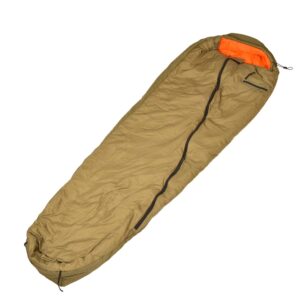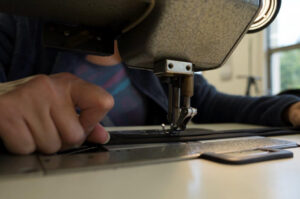How to choose the right sleeping bag
How to choose the right sleeping bag
A sleeping bag is a basic feature of every tent. Before you start looking for the ideal one, you need to think about the conditions and situations in which you will need a sleeping bag. Hot summer or freezing winter? each period brings different requirements for comfortable sleeping in a sleeping bag. You also need to be aware of the weight of the sleeping bag because not every sleeping bag is light.
There is no universal sleeping bag. Would he look like this? excellently breathable in summer, waterproof in rain, extremely warm in winter and impermeable in the wind, in addition light, compact and also cheap. Note that some properties are clearly contradictory, such as breathability and waterproofness. In general, the higher the wind resistance and waterproofness, the lower the breathability.
How to choose the right sleeping bag?
Let’s start with the basic features of a sleeping bag:
1. Season
2. Material
3. Temperature determination
4. Shape and size
5. Weight
1. The season for which the sleeping bag is intended
Summer sleeping bags are designed only for the summer warm season (from June to August). They are very light (approx. Up to 1,000 g), so they are suitable for hiking or summer camping by the water.
Winter sleeping bags warm up perfectly in the cold and frosty winter months, from autumn to spring.
You can use the three-season sleeping bags for overnight stays from spring to autumn. They are slightly heavier than summer sleeping bags (approx. 1,200 g).
In addition to these three types, there are also special sleeping bags, such as cycling sleeping bags, which are ultralight and minimalist, or also fishing sleeping bags. Another category is feather expedition sleeping bags designed for extremely cold and dry frosts. So if you step on Mount Everest, look for this category.
2. Sleeping bag material
The inside of the sleeping bag, which ensures warmth, can be made of feathers or synthetic fibers. Both types have their pros and cons.
The feather is a top insulator and the feather sleeping bag has the lowest weight while maintaining the same properties. On the other hand, feathers very easily absorb moisture, even airborne. The feather sleeping bag is therefore more difficult to maintain and also more expensive.
Synthetic fibers are much easier to maintain and do not mind moisture so much. The sleeping bag with synthetic filling can be dried quickly, machine washable, is suitable for allergy sufferers and does not reduce the thermal insulation ability so much when wet.
The outer material of the sleeping bag affects its strength, weight, water resistance and breathability. For cheaper variants, cotton is used, which is pleasant, but also heavy and bulky. Therefore, you will most often encounter polyamide with various water-repellent treatments.
3. Temperature determination of the sleeping bag
The European standard defines four types of temperatures. The upper extreme is the limit at which temperature the user in the sleeping bag becomes uncomfortably hot. The thermal comfort limit is between two values (comfort and limit temperature) and determines the lowest temperatures up to which the sleeping bag can be used. Choose between these values.
Comfort temperature is the temperature at which the user lying in a relaxed position on his back does not feel cold (rather for women).
The limit temperature indicates the limit at which the user lies in a crouched position and does not yet feel cold (more for men).
At temperatures below the extreme temperature, there is already a risk of hypothermia. Never follow this value.
4. Shape and size of a sleeping bag
When choosing the right size (length), keep in mind that a large sleeping bag heats the small body poorly and a tight sleeping bag will not heat up too much when the insulation layer is compressed. Therefore, choose it about 20 cm longer than the height of the figure. A special category are children’s sleeping bags.
We distinguish shape sleeping bags into:
Blankets, which can be unzipped around their entire perimeter, dry well and are suitable for easy camping or a cottage.
Mummies that copy the human body and the space around the head can be pulled with a shoelace. This minimizes heat loss. The special shape is an anatomical mummy, which, thanks to the stretch material, closely copies the shape of the body.
Ovals, which are a compromise between the shape of a blanket and a mummy, are designed for people of stronger stature.
How to choose the right sleeping bag?
We have prepared some principles for you, but the decision is up to you, because you will fall asleep in nature and you must be comfortable. Our company Michael Deec brings you sleeping bags that have proven themselves to us and are being prepared for the army.
In today’s global world, there is no big difference for what army the sleeping bag was made for, but it is clear that a sleeping bag for the army must be very durable and reliable. So, like everyone else, we test and build all our products for you so that they are very durable and smart solutions.


